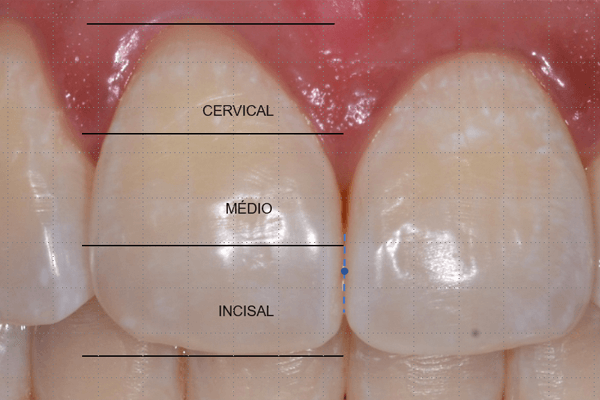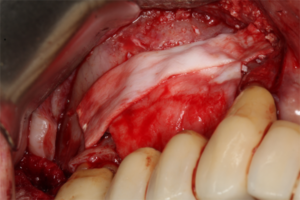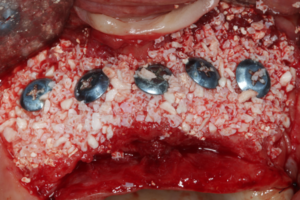Artigo avalia se há equivalência entre a análise do fenótipo gengival através de um método visual e a mensuração clínica da espessura da gengiva.
AUTORES
Isabela Rodrigues Gonsales
Mestranda em Periodontia – FOB-USP.
Orcid: 0000-0002-7222-8093.
Vitor de Toledo Stuani
Doutorando em Periodontia – FOB-USP.
Orcid: 0000-0001-5290-7614.
Carla Andreotti Damante
Professora doutora do Depto. de Periodontia – FOB-USP.
Orcid: 000-0002-6782-8596.
Adriana Campos Passanezi Sant’Ana
Professora doutora do Depto. de Periodontia – FOB-USP.
Orcid: 0000-0001-5640-9292.
Mariana Schützer Ragghianti Zangrando
Professora doutora do Depto. de Periodontia – FOB-USP.
Orcid: 0000-0003-0286-7575.
RESUMO
Objetivo: avaliar se há equivalência entre a análise do fenótipo gengival através de um método visual e a mensuração clínica da espessura da gengiva. Material e métodos: 36 pacientes foram avaliados por um examinador calibrado que realizou as medidas clínicas da espessura e da largura do tecido gengival (ETG e LTG, respectivamente) e altura das papilas (AP). Para a inspeção visual, as fotografias foram catalogadas em um arquivo do PowerPoint, permitindo que um segundo examinador avaliasse a posição do ponto de contato (PC) e o formato dentário (FD). Um terceiro examinador cego e calibrado categorizou o fenótipo fotográfico (FF) em fino/festonado ou plano/espesso observando estas fotografias. A concordância entre ETG e FF foi realizada através de um teste Kappa. As associações entre ETG, FF e as demais variáveis foram analisadas através do teste exato de Fischer com nível de significância de 5%. Resultados: não houve concordância estatisticamente significante entre ETG e FF (p > 0,05). Também não foi observada associação entre ETG e AP, PC e FD (p > 0,05) ou entre FF e LTG, AP e FD (p > 0,05). Contudo, houve relação entre ETG e LTG (p = 0,048) e entre FF e PC (p = 0,028). Conclusão: é possível sugerir que a melhor forma de se determinar com segurança o fenótipo gengival é através da mensuração clínica da espessura gengival.
Palavras-chave – Classificação; Fenótipo; Gengiva; Periodontia.
ABSTRACT
Objective: to evaluate if there is an equivalence between the analysis of gingival phenotype based on a visual method and the clinical measurement of gingiva thickness. Material and methods: 36 patients were evaluated by a calibrated examiner who took the clinical measures of gingival height and thickness (GH and GT, respectively) and the papillae height (PH). For the visual inspection, photographs were cataloged in a PowerPoint file, allowing a second examiner to evaluate the position of dental contact point (CP) and tooth shape (TS). A third blind calibrated examiner categorized those photographs as thin/scalloped or flat/thick to determine the photographic phenotype (PP). The agreement between GT and PP was performed through a Kappa test. The associations between GT, PP and the other variables were analyzed using Fischer’s exact test with a significance level of 5%. Results: there was no statistically significant agreement between GT and PP (p > 0.05). There was also no association between GT and PH, PC and TS (p > 0.05) or between PP and GH, PH and TS (p > 0.05). However, there was a relationship between GT and GH (p = 0.048) and between PP and CP (p = 0.028). Conclusion: it is possible to suggest that the best way to safely determine the gingival phenotype is through the clinical measurement of gingival thickness.
Key words – Classification; Phenotype; Gingiva; Periodontics.
Recebido em mai/2020
Aprovado em jul/2020





